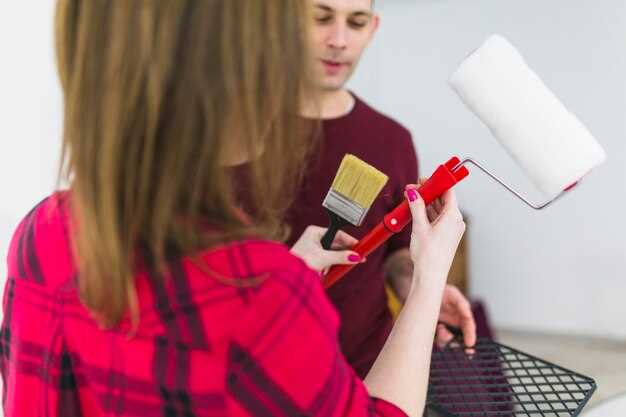
When it comes to customizing your vehicle or enhancing its appearance, two of the most popular options are wrapping and painting. Both methods have their unique advantages and disadvantages, making it essential to carefully consider which choice aligns best with your specific needs. This article aims to delve into the characteristics of both wrapping and painting, allowing you to make an informed decision based on your preferences and budget.
Vehicle wrapping involves applying a vinyl material over the vehicle’s surface to change its color or design. This method is favored for its versatility and the potential for intricate graphics. Wraps can be easily removed, allowing for changes in style without damaging the original paint underneath. However, understanding the longevity and maintenance requirements of wraps is crucial to ensure that they meet your expectations over time.
On the other hand, painting offers a more permanent solution for vehicle customization. A fresh coat of paint can provide a stunning and glossy finish that can last for years with proper care. Paint jobs allow for greater depth and color vibrancy, especially when specialized techniques like pearlescent or metallic finishes are employed. Nonetheless, repainting can be more costly and time-consuming, often requiring extensive preparation and multiple layers to achieve the desired effect.
As we explore the pros and cons of wrapping versus painting in the following sections, consider factors such as budget, intended use, and expected longevity. This will help you determine which option not only complements your vehicle’s aesthetic but also fits seamlessly into your lifestyle.
Wrapping vs Painting: Which Option Fits Your Needs Better

When it comes to customizing your vehicle’s appearance, two popular options are wrapping and painting. Each method has its own set of advantages and disadvantages that can significantly impact your decision based on your specific needs.
Vehicle Wrapping involves applying a large vinyl sheet over the vehicle’s existing paint. This method is known for its versatility and ease of application. One of the primary benefits of wrapping is removability; you can easily strip the wrap off and revert to the original color without damaging the underlying paint. Additionally, wraps offer a wide range of designs, colors, and finishes, including matte and glossy options, enabling you to achieve a unique look.
On the downside, the durability of wraps typically lasts between three to seven years, depending on factors such as exposure to the sun and care. Furthermore, improper installation can lead to bubbling and peeling, which may ruin the aesthetic appeal. Maintaining a wrapped vehicle requires specific cleaning products to avoid damaging the vinyl.
Painting, on the other hand, involves a more permanent alteration to your vehicle’s exterior. A well-executed paint job can enhance the vehicle’s value and often lasts longer than a wrap if maintained properly. Paint provides a smooth and durable finish that is less prone to tearing or peeling compared to vinyl.
However, painting your vehicle comes with a higher initial cost and more time-consuming application process. It typically requires professional service, which can take several days. Moreover, changes in color or design aren’t as easily reversible as with wrapping, making it a more committed investment.
Ultimately, the decision between wrapping and painting hinges on your priorities. If you seek a customizable, temporary solution that is less expensive, wrapping may be the best choice. Conversely, if you’re looking for a long-lasting, durable finish and don’t mind the upfront investment, painting could be the way to go. Assess your needs, budget, and desired outcome to determine which option fits your lifestyle best.
Cost Analysis: Comparing Expenses of Wrapping vs Painting Your Vehicle

When considering how to customize or protect your vehicle’s exterior, understanding the financial implications of wrapping versus painting is crucial. Both options come with distinct price tags, which can significantly influence your decision based on your budget and long-term goals.
The cost of wrapping a vehicle typically ranges from $2,000 to $5,000 for a standard sedan, depending on factors such as the quality of the vinyl, the complexity of the design, and the expertise of the installer. Wrapping may incur additional costs for any necessary surface preparation and removal of old graphics, but these expenses are generally lower compared to painting.
In contrast, a full vehicle paint job can cost anywhere from $3,000 to $10,000. This variation is influenced by the quality of paint used, the complexity of the job (such as additional detailing or multiple colors), and the reputation of the paint shop. Keep in mind that high-quality paint jobs often include several layers of primer, paint, and clear coat, which can increase labor costs.
Maintenance and longevity also play a vital role in cost analysis. Vinyl wraps can last between 3 to 7 years, while paint can last much longer if properly cared for. However, paint may require ongoing maintenance, including polishing and waxing, to maintain its appearance. Conversely, wraps are more vulnerable to environmental factors, and while they can be replaced relatively easily, this also adds to the potential long-term costs.
Resale value is another aspect to consider. A well-maintained paint job typically enhances a vehicle’s resale value. In contrast, while a wrap can be removed before sale, the underlying paint condition might affect the final value. Therefore, investing in a quality paint job may offer better returns if you plan to resell your vehicle in the future.
In summary, the decision between wrapping and painting your vehicle should be based on a comprehensive analysis of initial costs, maintenance, longevity, and resale value. Each option has its advantages and disadvantages, making it essential to evaluate what aligns best with your financial situation and personal preferences.
Durability and Maintenance: How Long Will Each Option Last?
When considering the longevity and upkeep of vehicle aesthetics, both wrapping and painting offer distinct advantages and disadvantages. Understanding how each option withstands the test of time can help you make an informed decision based on your needs.
Durability of Vehicle Wraps
Vehicle wraps are designed to endure various environmental elements. Here are key durability factors:
- Material Quality: High-quality vinyl wraps can last between 5 to 7 years with proper care.
- Protection: Wraps shield the underlying paint from UV rays, minor scratches, and road debris.
- Environmental Resistance: Resistant to fading, cracking, and peeling when maintained correctly.
Maintenance of Vehicle Wraps
Maintenance is crucial for maximizing the lifespan of a wrap:
- Cleaning: Use gentle soap and water; avoid abrasive materials.
- Parking: Whenever possible, keep wrapped vehicles in shaded areas to minimize sun exposure.
- Physical Damage: Address any scratches or tears promptly to prevent further damage.
Durability of Vehicle Paint
Vehicle paint’s durability can vary significantly based on type and application:
- Standard Paint: Factory-applied paint can last about 3 to 5 years before showing significant wear.
- Clear Bra and Ceramic Coatings: These protectants can enhance the longevity of paint, extending its lifespan beyond 10 years.
- Repainting: A high-quality repaint, applied correctly, can add another 5 to 10 years of durability.
Maintenance of Vehicle Paint
To prolong the life of painted surfaces, consider the following:
- Regular Washing: Frequent cleaning with appropriate car wash solutions can prevent dirt buildup and oxidation.
- Waxing: Applying wax every few months can protect the paint from UV rays and enhance shine.
- Professional Detailing: Periodic detailing helps maintain the finish and can catch any issues early on.
In conclusion, vehicle wraps generally offer a longer lifespan with less maintenance concern compared to traditional paint, particularly if you frequently change styles. In contrast, while paint may require more upkeep and can be more vulnerable to wear, it can achieve lasting beauty and protection with the right treatments. Choose based on your lifestyle and how you intend to use your vehicle.
Customization Options: What Creative Possibilities Does Each Method Offer?
When it comes to customizing your vehicle, both wrapping and painting offer distinct creative opportunities, each with its unique advantages and limitations.
Vinyl wrapping allows for an extensive range of colors, patterns, and textures, including matte, gloss, satin, and even carbon fiber finishes. This method enables you to create striking visual effects without the permanence of paint. Moreover, wraps can easily incorporate custom graphics, logos, or intricate designs, making them ideal for businesses seeking to promote brand identity or for enthusiasts wanting to showcase personal flair.
On the other hand, automotive painting provides a level of depth and finish that wraps cannot replicate. Paint can be applied in multiple layers, allowing for color blending, metallic or pearlescent finishes, and unique effects like candy or chameleon colors. Artists can leverage airbrushing techniques to create detailed illustrations or custom artwork, turning a vehicle into a canvas. Additionally, high-quality paint jobs often result in better longevity and protection against environmental factors compared to wraps.
Both methods have the potential to transform the appearance of a vehicle significantly. Wraps offer flexibility and reversibility, making them suitable for those who like to change their style frequently or those who are leasing vehicles. Painting, while more permanent, allows for deeper customization and personalization, appealing to those looking for a long-term investment in their vehicle’s aesthetics.
Ultimately, the choice between wrapping and painting hinges on your desired outcome, budget, and how often you plan to change the look of your vehicle. Understanding the creative possibilities of each method will help you make an informed decision that aligns with your vision.


